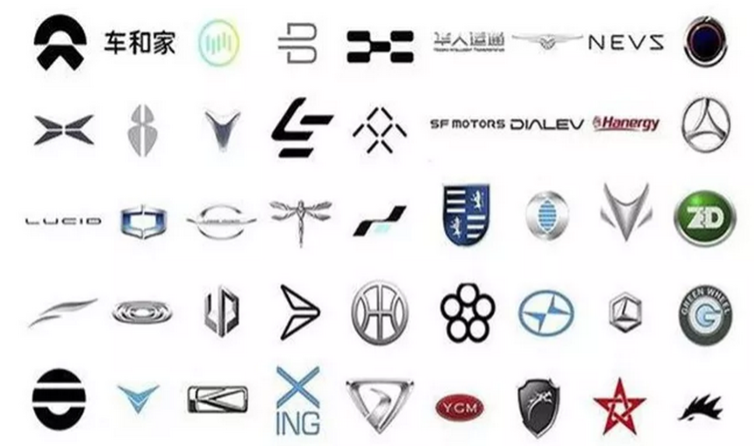2019.03.19 Zhang Wei 浏览次数:
On March 5th, Nio (NIO.NYSE), the leader of China’s new energy vehicle (NEV) start-ups, announced a net loss of $9.3B in its annual report. The report also predicted far weaker growth of sales in the future than had been expected, and its factory-building plans are put on ice. Later, its shares plunged 31% amid a 7-day losing streak and its market value evaporated by $4.21B. The number of NEV start-ups have long exceeded 100, while most of them are going to face an existential crisis in 2019. NEV as well as autonomous driving is absolutely a promising direction for investments. But there are no NEV firms worth of an investment so far.

On March 5th, Nio (NIO.NYSE), the leader of China’s new energy vehicle (NEV) start-ups, announced a net loss of $9.3B in its annual report. The report also predicted far weaker growth of sales in the future than had been expected, and its factory-building plans are put on ice. Later, its shares plunged 31% amid a 7-day losing streak and its market value evaporated by $4.21B. The number of NEV start-ups have long exceeded 100, while most of them are going to face an existential crisis in 2019. NEV as well as autonomous driving is absolutely a promising direction for investments. But there are no NEV firms worth of an investment so far.
China’s “car-making spree” has been launched around 2015. As policies have further skewed toward the auto industry, it has again become an investment trend with the capital playing a part in it. The auto industry is both capital and technology-intensive and its finance market size has been probably valued at ¥220.18Bn. With China government withdrawing financial subsidies for NEVs, the industry competition is about to turn policy-driven to market-oriented. As the tide ebbs, these NEV start-ups need to compete against traditional manufacturers with the quality of their products on their own. The success of these new forces depends entirely on their products and brand recognition.
To speak plainly, the recent crop of carmakers in such numbers over a short period isn’t about taking up a fad. Most companies are just coveting the heavily subsidized NEV market with opportunities for a quick profit. However, phasing out subsidies will speed up the reshuffling of the industry this year.
It can be seen that it’s the whole vehicle manufacturers who sit atop the “pyramid” because they have the best brand recognition. The industry only provides limited space for vehicle manufacturers, so we reckon that most vehicle star-ups will go bankrupt this year. Another ending for them is to be acquired by larger whole vehicle makers or taken over by real estate developers who are eager to funnel their money from virtual economy into real economy but act in a foolish way.
That being said, there are still many chances that can be sought from the industrial chain in the fledging NEV market. Apart from whole vehicle manufacturers, there are also auto parts suppliers that are major players in the auto industry like Robert Bosch (BOSCHLTD. NS) , Aisin Seiki (ASEKY). Do Chinese firms have the chance to optimize the NEV industrial chain resources and will there be competitive upstream or downstream companies in Chinese auto industry? These are the things we’re going to wait and see.
Above are excerpts from Zhang Wei’s article Why None of China’s NEV Start-ups Worth Investing In. He sharply criticized Chinese NEV start-ups’ pseudo-innovations and NEV subsidies “cheat”. He noted that zero to one innovation requires long-term accumulation with large capital expenditures, which is hard to be replicated and overtaken in a few years. But he didn’t deny the opportunities in NEV industrial chain because he believed that NEV and autonomous driving are the important trends in the future. Chinese firms still stand a chance to develop into major forces in upstream and downstream sectors by optimizing NEV industrial chain resources. The editorial was originally published on CoStone Capital WeChat. Access to the full article in Chinese: https://mp.weixin.qq.com/s/VE6g9GWx2xpVS_NMJOrtdw
Rewritten by Lu Ying, Edited by Li Yunzhen
去年我写了三篇文章:《我们究竟需要什么样的资本市场》、《什么是真正的“做多中国”》和《汽车界下一个退场的会是谁?》,引发了一些反响。
三篇文章看似三个主题,其实还是一个主题——什么是真正的“做多中国”。
我的核心观点很简单,也是我二十多年来始终强调的:
企业家在经济与产业发展中具有不可替代的作用。因此,支持民营企业、培育和保护企业家精神,才是推动发展与进步的核心要义。
民营企业家的信心何在?来自对未来的良好预期,包括对政策、法律、营商环境、产权以及安全等各个方面的预期,其底层逻辑是法治社会和市场决定论。
如何激励企业家创新创业?核心在于创造巨大的财富效应。一个包容的、有强大财富效应的资本市场,对保护企业家精神、激励创新创业、推动科技发展具有至关重要的作用。注册制的核心是调动全社会的创业和投资热情,进而改变全社会的融资结构。
为何去年我又开始密集地提及这些问题?因为我们确乎已经处于世界大变局的关键时点了,一切都在加速演进。
在政治上,国际格局深度调整,地缘政治博弈升级,新旧力量激烈竞逐。如何续写和平与发展、稳定与繁荣的篇章,深刻地考验着各国的智慧与担当。
在科技上,技术革命方兴未艾,前沿科技不断突破,人工智能风起云涌。第四次工业革命或将以前所未有的力度推动生产力的大发展,从而深刻地改变国家前途与人类命运。
在产业上,新兴产业不断解码,中国智造强势出海,市场竞争如火如荼。以新能源汽车产业代表的新兴产业,中国正在席卷全球,行业的淘汰赛将加速。在汽车机器人时代,即人工智能与芯片定义汽车的时代,比人聪明的汽车机器人登上舞台将是这个产业的奇点!
对于投资来说,2024年,中国经济和资本市场都经历了一个从低估到价值回归的过程。
长恨春归无觅处,不知转入此中来。在一些行业和企业表现暗淡的同时,很多新兴企业正在崛起。
正如我在基石资本的22条投资“军规”中强调的那样:投资与宏观经济无关。股市不是经济的晴雨表。从5至10年来看,资本市场与宏观经济并不成正比。同时,股价走势与企业绩效也并非完全对应。
投资不是投资宏观经济,也不是投资行业和赛道,而是投资活生生的企业和企业家。我们投资的是微观中代表新经济的优秀企业。
站在2025年的新起点,AI的征程才刚刚拉开大幕,让我们继续坚定不移地重仓硬科技,大力支持民营企业发展,持续为中国经济和产业发展注入新动力,打好这场“做多中国”的持久战。